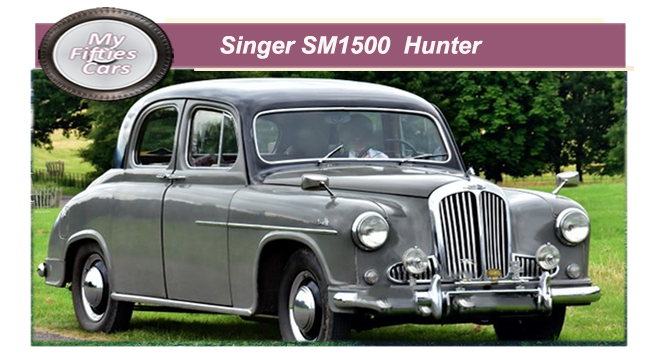
For the cash-strapped Singer company of the immediate postwar era, the name of the game was survival.
With little money around to develop new models, the company did their best to squeeze the maximum out of talready on the market.
T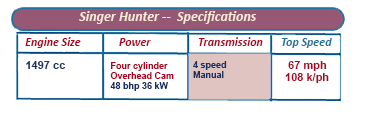 he first post-war Singer to be launched post-war was the SM1500, a large family saloon in production between 1948 to 1956.
he first post-war Singer to be launched post-war was the SM1500, a large family saloon in production between 1948 to 1956.
The SM1500 was brought in to replace the Super 10 and Super 12 models, both steady sellers before the outbreak of World War II. The Singer SM 1500’s body was styled in-house, with most of the credit going to by Leo Shorter.
S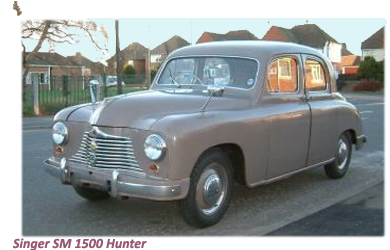 horter, who had acted as Singer's chief engineer for more than ten years, later confessed that much of his inspiration for the SM1500’s design had been marginally “drawn” from a similar model from American manufacturers Kaiser-Frazer.
horter, who had acted as Singer's chief engineer for more than ten years, later confessed that much of his inspiration for the SM1500’s design had been marginally “drawn” from a similar model from American manufacturers Kaiser-Frazer.
 Far from being one of the best looking cars on the market, the SM 1500 made up for that by being exceptionally practical.
Far from being one of the best looking cars on the market, the SM 1500 made up for that by being exceptionally practical.
To begin with, the SM 1500 was fitted with an overhead camshaft engine, making it almost unique at that time among UK produced saloon cars.
![]()
 The Singer SM 1500's engine was based on tried and tested technology developed by the company, fitted prewar in the Super 12 although with a larger bore and shorter stroke, which gave a capacity of 1506 cc, which was later reduced in 1951 to a maximum capacity of 1497cc.
The Singer SM 1500's engine was based on tried and tested technology developed by the company, fitted prewar in the Super 12 although with a larger bore and shorter stroke, which gave a capacity of 1506 cc, which was later reduced in 1951 to a maximum capacity of 1497cc.
A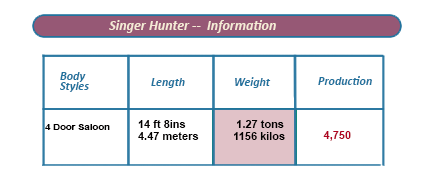 ccording to independent media reports, the Singer SM 1500’s engine block was so strong and resilient it could travel up to 65,000 miles (105,000 kilometres) without ever needing to open the top of the engine for a rebore.
ccording to independent media reports, the Singer SM 1500’s engine block was so strong and resilient it could travel up to 65,000 miles (105,000 kilometres) without ever needing to open the top of the engine for a rebore.
As far as internal trim was concerned, the SM 1500 came with a bench seat in the complete with a folding armrest as standard, while those owners who wanted a taste of luxury could choose leather upholstery.
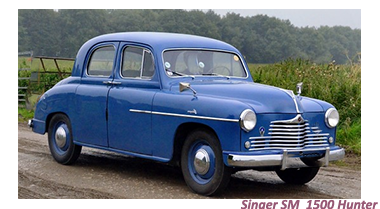 In an attempt to improve the SM 1500’s outward appearance, and, if it was any way possible, the SM1500's bland image, Singer handed the car a minor facelift in 1952. When that upgrade failed to capture the public's imagination they did the same again two years later.
In an attempt to improve the SM 1500’s outward appearance, and, if it was any way possible, the SM1500's bland image, Singer handed the car a minor facelift in 1952. When that upgrade failed to capture the public's imagination they did the same again two years later.
 The Singer SM 1500 Hunter remained in production, with very few additional updates until shortly after the business was sold to the Rootes Group in 1956.
During its three years in production, Singer sold just short of 5,000 Hunters.
The Singer SM 1500 Hunter remained in production, with very few additional updates until shortly after the business was sold to the Rootes Group in 1956.
During its three years in production, Singer sold just short of 5,000 Hunters.


